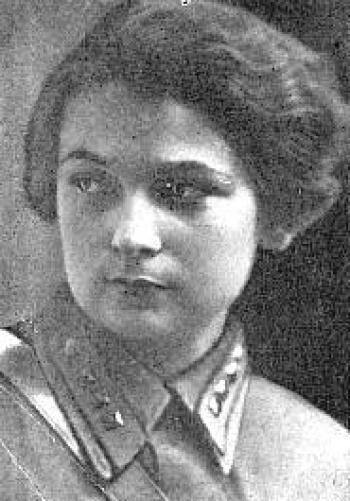Margarita Kotikovskaya was born in 1919 in a Jewish family living in Odessa Oblast.
She attended school there. From an early age, she wanted to become a detective. After finishing school, Margarita moved to Leningrad, where she enrolled in the Faculty of Law of Leningrad University.
While studying for a law degree, she married.
In early June 1941, Margarita, now a fourth-year university student, was called up to serve in the Red Army as a lieutenant. Therefore, following the outbreak of the Soviet-German War two weeks later, she was instantly sent to serve in the 4th Guards Rifle Division of the Leningrad Army of the People's Militia.
One of her fellow servicemen was the future famous sculptor Mikhail Anikushin. In 1975, when creating the Monument to the Heroic Defenders of Leningrad in Victory Square, he would use Margarita Kotikovskaya as the model for the female sanitary instructor.
While serving at the front, Margarita was awarded a law degree in absentia, without having passed the exams.
A month and a half after the outbreak of the war, in August 1941, Kotikovskaya learned that her husband, who was serving in the navy, had gone missing in action.
After a brief stint as an investigator at the Military Prosecutor's Office, Margarita retrained as a sniper. She went on to serve in this capacity throughout the three-year-long Siege of Leningrad, defending the city, and was awarded medals for her service.
After the end of the war, Margarita Kotikovskaya remained in Leningrad, where she worked at the Ministry of Internal Affairs. From 1950, she was a major crimes detective. She worked at this institution until her retirement in the rank of police colonel.
For a long time, Margarita Kotikovskaya kept sending inquiries to various institutions, trying to find any information about her missing husband. Alongside her job as a detective at the Prosecutor's Office, she was also engaged in searching for dead and missing Soviet soldiers, and this became her life's work.
In 1995, Kotikovskaya came to Munich. In 1997, she permanently moved to Germany and fully dedicated herself to searching for the names of dead Soviet POWs.
Margarita Kotikovskaya learned of the existence of Hebertshausen, a wartime SS shooting range that was located 5 km from the Dachau Concentration Camp. There, Wehrmacht soldiers trained by shooting at live targets, and Soviet POWS (about 7000 persons in total) were brought there for this purpose. She managed to recover some of their names, drawing up a list of 863 murdered Soviet soldiers and officers who had been listed as "missing in action". Thanks to this list, which came to be known as "Margarita's List", the victims' relatives were able to learn about the last days in the lives of their loved ones.
With the assistance of German archivists, she was able to determine that, in August 1941, the crew of the vessel on which her husband served had been taken prisoner. The men were transferred to a prison in the German-occupied town of Kingisepp, and shot almost immediately upon arrival.
Margarita Kotikovskaya died in Munich in 2011, at the age of 91.







